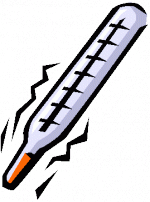
Site Owned by Upper Valley Lake Sunapee Regional Planning Commission

Don't Trash Mercury! Awareness of the problems with mercury (Hg) has increased greatly in recent years. Items you might have around your home that may contain mercury include:
Products with mercury in them should not be thrown in the trash. They should be taken to a Household Hazardous Waste collection. This is because mercury is harmful to human health and the environment. Damage to the nervous system, brain, and reproductive system can occur through inhaling mercury vapors or through consumption of contaminated fish or birds. Children and pregnant women are the most vulnerable to mercury poisening.
Fish and loons often have elevated mercury levels in their bodies. When mercury gets into surface waters, it is transformed by aquatic microorganisms into methyl mercury. Methyl mercury is biologically retained in the organisms much more easily than elemental mercury. Then the methyl mercury "bioaccumulates" as bigger creatures eat lots of little creatures. The animals at the top of the food chain, like fish and loons, therefore have accumulated the most mercury--that's why there are fish consumption advisories in New England and why loons die.
For more information about what's happening in New Hampshire, visit the Department of Environmental Services. See here for NH DES best management practices for mercury-containing devices and lamps/bulbs. Transfer stations must have a sign prohibiting mercury-containing devices such as this downloadable sign.
For more information about what's happening with mercury in Vermont, visit the Mercury Education and Reduction Campaign
In the past, felt hat makers used mercury while making their hats. Their exposure to mercury lead to the deterioration of their brain and left them, well... mad! Hence the expression and the character, the "Mad Hatter," in Lewis Carroll's Alice in Wonderland.
Click here for What do I do if I break a mercury fever thermometer?
Click here for What do I do if I break a fluorescent bulb?
SITE SEARCH